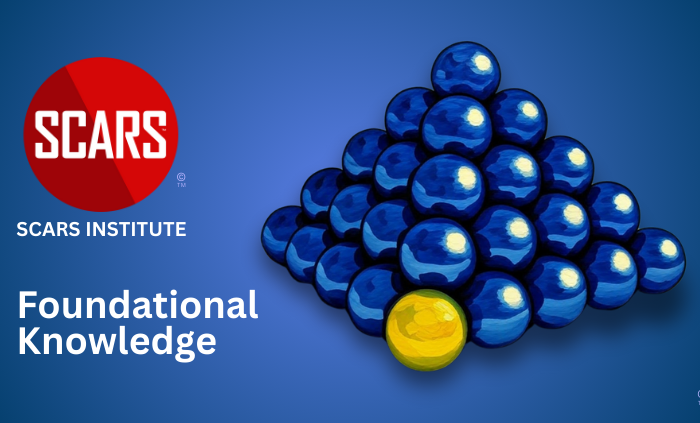Criminality – What Is Its Essence?
Author:
• Tim McGuinness, Ph.D. – Anthropologist, Scientist, Director of the Society of Citizens Against Relationship Scams Inc.
Understanding the Essence of Criminality is Very Difficult For Victims!
The essence of criminality involves engaging in actions or behaviors that are prohibited by law and deemed harmful to individuals, communities, or society as a whole.
Trigger Warning!
Looking at criminality, and specifically, information about criminals can be very triggering for crime victims, especially scam victims. After all, these criminals robbed their victims of their life savings, emotional well-being, and even their mental health. Criminals even caused many victims to take their own lives.
However, not being able to understand the criminals very often leads victims to greater mental distress and even serious disorders. It leads victims toward anger, rage, and even hate, as well as vigilantism. It can lead victims to mental disorders that can profoundly impact their lives.
If you are a victim and are not ready to read this then you should not. But if you are trying to help yourself move forward then this article may help you to understand (not excuse) why people become criminals.
Introduction
Criminality typically involves acts that pose a threat to public safety, order, or the well-being of individuals, businesses, and institutions. It encompasses various offenses, from minor infractions to serious felonies, such as theft, assault, fraud, or violent crimes. The essence of criminality often revolves around violating established legal norms and regulations, including the rights of others, leading to potential legal consequences, such as fines, probation, incarceration, or other punitive measures, as a means of maintaining social order and deterring harmful behaviors.
Why is it Important For Crime Victims to Understand all of this?
It is important for crime victims to understand why people turn towards criminality so that they can see the criminals as real humans and let go of hate for them.
The reasons for letting go of the hate for the criminals:
- Understanding the root causes of crime can help victims to develop compassion for criminals. When victims understand that criminals are often driven by factors such as poverty, lack of education, and trauma, they may be more likely to see them as human beings who have made mistakes, rather than as monsters who deserve to be hated.
- Understanding why people turn towards crime can help victims to make sense of their experience. When victims understand the factors that contribute to crime, they may feel less alone and less isolated. They may also feel more empowered to take steps to prevent themselves from becoming victims again.
- Letting go of hate can help victims to heal from their trauma. Hate and anger can be toxic emotions that can eat away at a person’s physical and mental health. By letting go of hate, victims can begin to move on from their experience and rebuild their lives.
It is important to note that understanding the root causes of crime does not mean condoning or excusing it. Criminals are still responsible for their actions and must be held accountable. However, understanding why people turn towards crime can help victims to develop a more nuanced or balanced view of criminals and to move forward in a healthy way.
NOTE: NOT ALL CRIMES ARE THE SAME. CRIMES OF VIOLENCE ARE QUITE DIFFERENT THAN ECONOMIC CRIMES. THERE ARE LINES THAT SOME CROSS THAT ARE COMPLETELY IRREDEMEABLE.
It is also important to note that the process of understanding and forgiving criminals can be a difficult one. It takes time and effort. Victims should not be pressured to forgive if they are not ready. However, understanding why people turn to crime can be an important step in the healing process.
How does one person become a criminal when another, perhaps with even more cause, does not follow the path of criminality?
The factors that influence why one person may become a criminal while another with similar life circumstances does not follow the path of criminality are complex and multifaceted. This is still something that is heavily debated – many still hold to the old ‘nurture vs. nature’ argument.
There is no one-size-fits-all explanation, but several key factors play a role in understanding these differences:
Individual Choices:
People have agency and make choices based on their values, beliefs, and personal ethical standards. Some individuals may choose to engage in criminal activities, while others decide against it.
Some people are more prone to criminality than others due to individual characteristics such as impulsivity, aggression, and risk-taking behavior. These traits may be influenced by genetics, brain development, and early life experiences.
For example, studies have shown that children with ADHD are more likely to engage in delinquent behavior, and adults with antisocial personality disorder are more likely to commit crimes. However, it is important to note that these are just risk factors, and not all people with these characteristics will become criminals.
Social Support and Bonds:
Strong bonds with family, friends, and the community can deter individuals from criminal behavior – of course, unless their family, friends, and community are also criminals, then it almost guarantees it. Supportive relationships provide a sense of belonging, emotional security, and a support system that discourages criminal activities.
The family and social environment play a major role in shaping an individual’s values and behaviors. Children who grow up in poverty, experience violence or abuse, or lack positive role models are more likely to engage in criminal activity.
Economic Opportunity:
A lack of legitimate economic opportunities can drive some individuals to criminal behavior as a means of survival. Others may find legal ways to overcome economic hardship, such as through education or job training.
Economic opportunity plays a significant role in why someone turns toward criminality. People who live in poverty and have limited job opportunities are more likely to commit crimes. This is because they may see crime as a way to make money or support themselves and their families.
There are a number of ways in which economic opportunity can influence criminal behavior:
-
-
- Lack of economic opportunity can lead to desperation. When people are struggling to meet their basic needs, they may be more likely to turn to crime as a way to survive.
- Lack of economic opportunity can reduce the perceived cost of crime. People who have few other options may be more willing to risk the consequences of crime in order to make money.
- Lack of economic opportunity can increase exposure to criminal activity. People who live in poor neighborhoods with high unemployment rates are more likely to be surrounded by people who are involved in crime. This can make it more likely that they will become involved in crime themselves.
-
In addition, a lack of economic opportunity can have a negative impact on a person’s development and well-being. People who grow up in poverty are more likely to experience trauma, violence, and other stressors. These experiences can increase the risk of developing mental health problems, such as depression and anxiety, which can also contribute to criminal behavior.
There is a growing body of research that shows that economic opportunity can reduce crime. For example, a study by the Brookings Institution found that a 1% increase in the unemployment rate leads to a 0.6% increase in the crime rate.
Another study, by the National Bureau of Economic Research, found that the Earned Income Tax Credit (EITC), a program that provides tax breaks to low-income workers, reduces crime by 10-15%.
These studies suggest that investing in economic opportunity is one of the most effective ways to reduce crime. By creating jobs and improving access to education and training, we can help people achieve success and avoid the temptation of crime.
Educational Attainment:
Higher levels of education can lead to better job prospects and the ability to secure lawful means of income. Education can also broaden one’s perspective and understanding of the consequences of criminal behavior.
People with higher levels of education are less likely to commit crimes than people with lower levels of education. This is for a number of reasons:
-
- Education provides people with the skills and knowledge they need to succeed in the legitimate economy. People who have higher levels of education are more likely to be employed and earn higher wages. This reduces their need to commit crimes in order to meet their basic needs.
- Education teaches people about the law and the consequences of crime. People with higher levels of education are more likely to understand the wrongfulness of crime and the potential consequences, such as imprisonment or fines.
- Education exposes people to positive role models and values. Schools and other educational institutions can teach people about the importance of honesty, integrity, and respect for the law.
- Education can help people develop problem-solving and conflict resolution skills. These skills can help people to deal with challenges in their lives in a constructive way, rather than by resorting to crime.
There is a growing body of research that shows that education is an effective way to reduce crime. For example, a study by the National Bureau of Economic Research found that a 1% increase in the high school graduation rate leads to a 0.4% decrease in the crime rate.
Another study, by the University of Chicago, found that the Head Start program, a preschool program for low-income children, reduces crime by 50% among participants.
These studies suggest that investing in education is one of the most effective ways to reduce crime. By helping people achieve success in school, we can help them avoid the temptation of crime and build a better future for themselves and their communities.
Peer Influence:
Friends and peers play a significant role in shaping an individual’s behavior. Peer groups that encourage criminal activities can influence someone to engage in those activities.
Adolescents and young adults are particularly vulnerable to peer influence, as they are seeking to establish their identity and sense of belonging. Peers can influence an individual’s attitudes, beliefs, and behaviors in a number of ways, including:
-
- Social reinforcement: Individuals are more likely to engage in behaviors that are rewarded or praised by their peers. Conversely, they are less likely to engage in behaviors that are criticized or punished by their peers.
- Social modeling: Individuals learn by observing the behaviors of others, including their peers. If an individual’s peers are involved in criminal activity, they are more likely to become involved in criminal activity themselves.
- Group norms: Individuals are more likely to conform to the norms of their peer group, even if they do not agree with those norms. If a peer group has a culture of criminality, its members are more likely to engage in criminal activity.
Peer influence is particularly powerful during adolescence and young adulthood because the brain is still developing during these years. The areas of the brain responsible for impulse control and risk assessment are not yet fully mature. This makes adolescents and young adults more susceptible to peer pressure, including pressure to engage in criminal activity.
Mental Health and Substance Abuse:
Issues related to mental health, addiction, or substance abuse can contribute to criminal behavior. Access to treatment and mental health support can be critical in preventing criminality.
Mental health can play a role in why someone turns toward criminality in a number of ways:
-
-
- Mental health problems can lead to social isolation, discrimination, and stigma. This can lead to feelings of hopelessness, despair, and anger, which can make people more vulnerable to engaging in criminal behavior.
- Mental health problems can make it difficult to cope with stress and manage emotions. This can lead to impulsive and reckless behavior, including criminal behavior.
- Some mental health problems, such as schizophrenia and bipolar disorder, can cause psychotic symptoms. Psychotic symptoms can impair a person’s judgment and reality testing, which can make them more likely to commit violent crimes.
- Mental health problems can also be exacerbated by substance abuse. Substance abuse can worsen mental health symptoms and lead to impulsive and risky behaviors.
- People with mental health problems may also be more likely to be victims of crime. This can lead to a cycle of violence, as victims of crime are more likely to become perpetrators of crime themselves.
-
It is important to note that not all people with mental health problems are criminals. In fact, people with mental health problems are more likely to be victims of crime than to commit crimes themselves. However, people with mental health problems (such as psychopathy) are at an increased risk of criminality, and it is important to understand the factors that contribute to this risk.
Resilience and Coping Skills:
Individuals with strong resilience and adaptive coping skills are better equipped to deal with adversity without resorting to criminal behavior.
Resilience is the ability to adapt and bounce back from adversity. Coping skills are the strategies that people use to manage stress and difficult emotions. People who have strong resilience and coping skills are more likely to be able to deal with challenges in their lives in a healthy way, and less likely to turn to crime as a way to cope.
Resilience can help people to avoid criminality in a number of ways. For example, resilient people are more likely to:
-
-
- Have a positive outlook on life
- Be able to set and achieve goals
- Have a strong support network
- Be able to manage stress and difficult emotions
- Be able to bounce back from setbacks
-
Coping skills can also help people to avoid criminality. For example, people with strong coping skills are more likely to:
-
-
- Be able to identify and express their emotions in a healthy way
- Be able to solve problems effectively
- Be able to delay gratification
- Be able to resist temptation
- Be able to make responsible decisions
-
People who lack resilience and coping skills are more likely to:
-
-
- Feel overwhelmed by stress and difficult emotions
- Turn to unhealthy coping mechanisms, such as substance abuse or violence
- Be impulsive and reckless
- Make poor decisions
- Be more susceptible to negative peer influence
-
It is important to note that resilience and coping skills are not fixed traits. They can be learned and developed over time. There are a number of programs and resources available to help people develop resilience and coping skills.
Community Resources:
Access to social services, community programs, and support networks can provide alternatives to criminal activities and help individuals overcome challenges.
Community resources are the programs and services that are available to help people meet their basic needs and improve their lives. Here are some of the ways in which community resources can help to prevent criminality:
-
-
- Providing access to education and job training: Education and job training can help people to develop the skills and knowledge they need to find and keep good jobs. This can reduce the risk of criminality by providing people with a legitimate way to meet their basic needs and improve their lives.
- Providing affordable housing and healthcare: Affordable housing and healthcare are essential for people to live healthy and productive lives. When people lack access to these basic necessities, they are more likely to turn to crime to meet their needs.
- Providing opportunities for recreation and positive youth development: Recreation and positive youth development programs can help to keep young people occupied and engaged in positive activities. This can reduce the risk of criminality by providing young people with alternatives to involvement in gangs and other criminal activity.
- Promoting social cohesion and reducing isolation: Social cohesion is the sense of community and belonging that people feel. When people feel connected to their community, they are less likely to turn to crime. Community organizations and programs can play a role in promoting social cohesion by providing opportunities for people to come together and interact.
- Providing support and services to people with mental health problems and substance abuse disorders: People with mental health problems and substance abuse disorders are at an increased risk of criminality. Community programs and services can help these people to manage their symptoms and live healthy and productive lives. This can reduce the risk of criminality by addressing the underlying factors that may contribute to criminal behavior.
-
Cultural and Societal Norms:
Cultural and societal values and norms can influence an individual’s perception of right and wrong. Some cultures may discourage criminal behavior more effectively than others.
Cultural norms are the shared beliefs and values of a particular group of people. Societal norms are the broader norms and values that are shared by a society as a whole. These norms can influence people’s behavior in a number of ways, including:
-
-
- Providing a sense of right and wrong: Cultural and societal norms can help people understand what is considered to be right and wrong behavior. This can help to deter people from engaging in criminal behavior.
- Promoting conformity: Cultural and societal norms can pressure people to conform to the expectations of their group or society. This can help to reduce crime by encouraging people to behave in a way that is acceptable to others.
- Providing opportunities for legitimate success: Cultural and societal norms can also influence the opportunities that people have for legitimate success. For example, if a society values education and employment, people who lack these things may be more likely to turn to crime to meet their needs.
-
Law Enforcement and Criminal Justice System:
The effectiveness and fairness of the criminal justice system can influence criminal behavior. A system that provides fair trials, rehabilitation, and reintegration opportunities may reduce recidivism.
Law enforcement and the criminal justice system can play a role in why someone turns toward criminality in a number of ways.
-
-
- Overpolicing: Overpolicing is the practice of policing certain communities or groups of people more heavily than others. This can lead to feelings of resentment and distrust of law enforcement, which can make people more likely to turn to crime.
- Mass incarceration: The United States has the highest incarceration rate in the world. This means that a large number of people are being incarcerated, many of them for non-violent offenses. Mass incarceration can have a number of negative consequences, including disrupting families and communities, making it difficult for people to find jobs after they are released from prison, and increasing the risk of recidivism.
- Lack of rehabilitation: Many prisons in the United States do not provide adequate rehabilitation programs. This means that people who are incarcerated are not being given the tools they need to succeed after they are released from prison, which can increase their risk of recidivism.
- Discrimination: The criminal justice system can be discriminatory, with people of color and people from low-income communities being more likely to be arrested, charged, convicted, and sentenced to harsher penalties. This can lead to feelings of injustice and hopelessness, which can make people more likely to turn to crime.
- Lack of access to justice: Many people do not have access to quality legal representation, which can put them at a disadvantage in the criminal justice system. This can lead to unfair outcomes, such as people being convicted of crimes they did not commit or being sentenced to harsher penalties than they deserve.
-
The Thrill:
Thrill-seeking is a personality trait that is characterized by a need for excitement, novelty, and risk. Thrill-seekers are often drawn to dangerous or illegal activities because they find them stimulating and exciting.
There are a number of ways in which thrill-seeking can play a role in why someone turns toward criminality. For example:
-
-
- Thrill-seekers may be more likely to impulsively engage in risky or illegal activities. They may be less likely to think through the consequences of their actions, and they may be more likely to act on their impulses, even if they know that they are breaking the law.
- Thrill-seekers may be more likely to associate with other thrill-seekers, including criminals. This can increase their exposure to criminal activity and make it more likely that they will become involved in crime themselves.
- Thrill-seekers may be more likely to view crime as a way to get a thrill or an adrenaline rush. They may see crime as a challenge or a game, and they may enjoy the excitement of breaking the rules and getting away with it.
-
In addition, thrill-seeking may be more pronounced in certain populations, such as adolescents and young adults. This is because the brain is still developing during these years, and the areas of the brain responsible for impulse control and risk assessment are not yet fully mature.
It is important to note that not all thrill-seekers become criminals. However, thrill-seeking is a personality trait that can be associated with criminal behavior, especially in certain populations and in certain circumstances.
Lack of Empathy
A lack of empathy can play a role in why someone turns toward criminality in a number of ways.
Empathy is the ability to understand and share the feelings of another person. People who lack empathy may have difficulty understanding the pain and suffering that their actions can cause others. This can make them more likely to engage in criminal behavior, even if they know that their actions are wrong.
It is important to note that a lack of empathy is not the only factor that contributes to criminality. However, it is a significant factor that can make people more likely to turn to crime.
Mental Compartmentalization
Mental compartmentalization, also known as cognitive compartmentalization, is a psychological process in which an individual separates their thoughts, feelings, and memories into different compartments to reduce the impact of negative or conflicting emotions. This can be a useful coping mechanism for dealing with trauma or stress, but it can also play a role in why someone turns towards criminality.
Criminals may use mental compartmentalization to justify their actions and to suppress their guilt or empathy for their victims. For example, a thief may compartmentalize their thoughts about the victim of their crime by telling themselves that the victim is wealthy and can afford to lose the stolen property. A violent criminal may compartmentalize their thoughts about their victim by dehumanizing them or by viewing them as a threat that needed to be eliminated.
Mental compartmentalization can also lead to criminals developing a “dual life” in which they appear to be normal and law-abiding citizens on the surface, but engage in criminal activity in secret. This can make it difficult for law enforcement to identify and apprehend criminals, and it can also make it difficult for criminals to seek help for their criminal behavior.
Here are some specific examples of how mental compartmentalization can play a role in criminality:
-
- Scammers compartmentalize their thoughts about their victims so they can make money and achieve their goals at the expense of their victims.
- A serial killer may compartmentalize their thoughts about their victims by viewing them as objects or as deserving of death.
- A white-collar criminal may compartmentalize their thoughts about their crimes by telling themselves that they are only doing what is necessary to succeed in business.
- A drug dealer may compartmentalize their thoughts about the negative consequences of their drugs on their customers by telling themselves that they are just providing a service that people want.
It is important to note that mental compartmentalization is not a mental illness. It is a normal coping mechanism that everyone uses to some extent. However, criminals may use mental compartmentalization in a more extreme way to justify their actions and to suppress their guilt or empathy.
Important
It’s important to note that each individual criminal’s journey is unique, and these factors interact in complex ways. Additionally, many people who engage in criminal behavior may have experienced a combination of these influences. Preventing criminality often involves addressing these factors through social and educational programs, economic opportunities, mental health services, and community support.
We should neve excuse criminal behavior but at least in understanding it we can see them as human beings who are caught up in a life they may ultimately regret.
More:
- Hating Criminals Feels So Good But Is So Bad (romancescamsnow.com)
- Socio-Economic Theory of Nigerian Cybercriminals (romancescamsnow.com)
- Scammers Are The New Boogeymen! 2023 (scamsnow.com)
- Cybercriminal Mole – UK Police Arrest One Of Their Own! (scamsnow.com)
- The Standard Scammer Organizational Model (romancescamsnow.com)
- Shifting Baseline Syndrome (SBS) And Scam Awareness (scamsnow.com)
- Why Scammers Don’t Give Up (scamsnow.com)
- Scam Victim Commits Crimes For Their Scammers (scamsnow.com)
- Victimology – What Is It? (scamsnow.com)
SCARS Resources:
- For New Victims of Relationship Scams newvictim.AgainstScams.org
- Subscribe to SCARS Newsletter newsletter.againstscams.org
- Sign up for SCARS professional support & recovery groups, visit support.AgainstScams.org
- Find competent trauma counselors or therapists, visit counseling.AgainstScams.org
- Become a SCARS Member and get free counseling benefits, visit membership.AgainstScams.org
- Report each and every crime, learn how to at reporting.AgainstScams.org
- Learn more about Scams & Scammers at RomanceScamsNOW.com and ScamsNOW.com
- Global Cyber Alliance ACT Cybersecurity Tool Website: Actionable Cybersecurity Tools (ACT) (globalcyberalliance.org)
- Self-Help Books for Scam Victims are at shop.AgainstScams.org
- Donate to SCARS and help us help others at donate.AgainstScams.org
- Worldwide Crisis Hotlines: International Suicide Hotlines – OpenCounseling : OpenCounseling
- Campaign To End Scam Victim Blaming – 2024 (scamsnow.com)
-/ 30 /-
What do you think about this?
Please share your thoughts in a comment below!
More ScamsNOW.com Articles
-/ 30 /-
What do you think about this?
Please share your thoughts in a comment above!
SCARS LINKS: AgainstScams.org RomanceScamsNOW.com ContraEstafas.org ScammerPhotos.com Anyscam.com ScamsNOW.com
reporting.AgainstScams.org support.AgainstScams.org membership.AgainstScams.org donate.AgainstScams.org shop.AgainstScams.org
youtube.AgainstScams.org linkedin.AgainstScams.org facebook.AgainstScams.org
ARTICLE RATING
TABLE OF CONTENTS
- Understanding the Essence of Criminality is Very Difficult For Victims!
- Trigger Warning!
- Introduction
- Why is it Important For Crime Victims to Understand all of this?
- How does one person become a criminal when another, perhaps with even more cause, does not follow the path of criminality?
- Important
- More:
- SCARS Resources:
- SCARS Institute™ ScamsNOW Magazine
Society of Citizens Against Relationship Scams Inc. [SCARS]
CATEGORIES
MOST POPULAR COMMENTED ARTICLES
POPULAR ARTICLES
U.S. & Canada Suicide Lifeline 988
![NavyLogo@4x-81[1]](https://scamsnow.com/wp-content/uploads/2025/04/NavyLogo@4x-811.png)
ARTICLE META
WHAT PEOPLE ARE TALKING ABOUT LATEST SITE COMMENTS
See Comments for this Article at the Bottom of the Page
on Arts and Crafts Can Significantly Aid in Recovery for Scam Victims – 2025: “I did not realize that things I like doing very much—knitting or sudoku—were so helpful in my recovery process. The…” Jul 14, 11:28
on Projection And Scam Victims: “The moment I realized I had a financial loss due to a scam I realized that I felt shame, guilt,…” Jul 13, 19:12
on Japanese Legend of Tears – When There Are No Words – 2025: “After discovering the fraud, the pain was enormous. I shed oceans of tears, but I always tried to do it…” Jul 13, 10:50
on The SCARS Institute Scam Victim Recovery Timeline – 2025: “Wow. I umm experienced some of the later curves. I have been bouncing back and forth between asking myself why…” Jul 11, 00:01
on Transference And Emotional Danger After The Scam – 2024: “Thank you for the kind but firm reminder that the person in the stolen profile photo has their own life.…” Jul 9, 01:26
on ‘Mental Defeat’ – The Unique Condition Of Giving Up – 2024: “Thank you for another great article. I can see from this article that mental defeat would be debilitating to a…” Jul 9, 00:49
on Trust: Romance Scams Betrayal And Scam Victims – 2024: “This provided valuable insight that I can identify with” Jul 8, 16:44
on A Scam Victim in Extreme Distress – Stopping the Pain – 2024: “Your trust issues are very understandable. We are very sorry this happened to you. We suggest that you contact an…” Jul 8, 14:42
on A Scam Victim in Extreme Distress – Stopping the Pain – 2024: “My online counselors advised me to check myself in. I went to the hospital because I was suicidal. After I…” Jul 8, 13:44
on Scam Victim Catastrophizing Making Recovery Difficult 2024: “Excellent article on catastrophizing. I can understand how this could take a person down a rabbit warren of never ending…” Jul 8, 12:12
on The Self-Pity Trap & How To Overcome It – 2023 – [UPDATED 2025]: “I am not in the habit of feeling sorry for myself. After the deception, although it was not easy at…” Jul 8, 11:49
on Pride – A Dual Edged Sword For Scam Victims – 2023 [UPDATD 2024]: “Looking back over my life I have seen how pride has impacted me both positively and negatively. However the negative…” Jul 8, 09:08
on The Self-Pity Trap & How To Overcome It – 2023 – [UPDATED 2025]: “I felt self-pity while the enormity of my financial loss washed over me like a tsunami. The self-pity lasted only…” Jul 7, 18:55
on The Uniqueness Of Scam Victims Or Fraud Victims – 2024: “unfortunately all true. It is highly stressful dealing with the aftermath. I am being sued for the money I borrowed…” Jul 6, 12:50
on Scam Victims & Mental Health Blaming – 2023 [UPDATED 2025]: “For most of my life words have defeated me, made me feel insignificant, unwanted, unneeded. For this reason it is…” Jul 5, 13:36
on Substance Abuse Susceptibility And Scam Victims – 2024: “It is understandable how some would feel that alcohol or substance abuse would be helpful in handling their feelings after…” Jul 1, 20:36
on Scam Victims Use Work To Avoid Healing: “The last 6 years have been the most difficult of my life. The pandemic, having both parents in the hospital…” Jun 29, 18:38
on Entitlement Mentality And How Scam Victims Often Lose Their Path To Recovery – 2024: “Thank you for this discussion of entitlement. I can see from the descriptions listed that I have not felt entitlement.…” Jun 29, 18:22
on Samurai Wisdom and Rituals for Clearing the Mind After Scam Trauma – 2025 – [VIDEOS]: “A great guide on how to move forward in our recovery process with a calm mind, cleansed on an ongoing…” Jun 28, 07:34
Important Information for New Scam Victims
Please visit www.ScamVictimsSupport.org – a SCARS Website for New Scam Victims & Sextortion Victims
SCARS Institute now offers a free recovery program at www.SCARSeducation.org
Please visit www.ScamPsychology.org – to more fully understand the psychological concepts involved in scams and scam victim recovery
If you are looking for local trauma counselors, please visit counseling.AgainstScams.org
If you need to speak with someone now, you can dial 988 or find phone numbers for crisis hotlines all around the world here: www.opencounseling.com/suicide-hotlines
Statement About Victim Blaming
Some of our articles discuss various aspects of victims. This is both about better understanding victims (the science of victimology) and their behaviors and psychology. This helps us to educate victims/survivors about why these crimes happened and not to blame themselves, better develop recovery programs, and help victims avoid scams in the future. At times, this may sound like blaming the victim, but it does not blame scam victims; we are simply explaining the hows and whys of the experience victims have.
These articles, about the Psychology of Scams or Victim Psychology – meaning that all humans have psychological or cognitive characteristics in common that can either be exploited or work against us – help us all to understand the unique challenges victims face before, during, and after scams, fraud, or cybercrimes. These sometimes talk about some of the vulnerabilities the scammers exploit. Victims rarely have control of them or are even aware of them, until something like a scam happens, and then they can learn how their mind works and how to overcome these mechanisms.
Articles like these help victims and others understand these processes and how to help prevent them from being exploited again or to help them recover more easily by understanding their post-scam behaviors. Learn more about the Psychology of Scams at www.ScamPsychology.org
SCARS INSTITUTE RESOURCES:
If You Have Been Victimized By A Scam Or Cybercrime
♦ If you are a victim of scams, go to www.ScamVictimsSupport.org for real knowledge and help
♦ Enroll in SCARS Scam Survivor’s School now at www.SCARSeducation.org
♦ To report criminals, visit https://reporting.AgainstScams.org – we will NEVER give your data to money recovery companies like some do!
♦ Follow us and find our podcasts, webinars, and helpful videos on YouTube: https://www.youtube.com/@RomancescamsNowcom
♦ Learn about the Psychology of Scams at www.ScamPsychology.org
♦ Dig deeper into the reality of scams, fraud, and cybercrime at www.ScamsNOW.com and www.RomanceScamsNOW.com
♦ Scam Survivor’s Stories: www.ScamSurvivorStories.org
♦ For Scam Victim Advocates visit www.ScamVictimsAdvocates.org
♦ See more scammer photos on www.ScammerPhotos.com
You can also find the SCARS Institute on Facebook, Instagram, X, LinkedIn, and TruthSocial
Psychology Disclaimer:
All articles about psychology and the human brain on this website are for information & education only
The information provided in this and other SCARS articles are intended for educational and self-help purposes only and should not be construed as a substitute for professional therapy or counseling.
Note about Mindfulness: Mindfulness practices have the potential to create psychological distress for some individuals. Please consult a mental health professional or experienced meditation instructor for guidance should you encounter difficulties.
While any self-help techniques outlined herein may be beneficial for scam victims seeking to recover from their experience and move towards recovery, it is important to consult with a qualified mental health professional before initiating any course of action. Each individual’s experience and needs are unique, and what works for one person may not be suitable for another.
Additionally, any approach may not be appropriate for individuals with certain pre-existing mental health conditions or trauma histories. It is advisable to seek guidance from a licensed therapist or counselor who can provide personalized support, guidance, and treatment tailored to your specific needs.
If you are experiencing significant distress or emotional difficulties related to a scam or other traumatic event, please consult your doctor or mental health provider for appropriate care and support.
Also read our SCARS Institute Statement about Professional Care for Scam Victims – click here
If you are in crisis, feeling desperate, or in despair, please call 988 or your local crisis hotline.
More ScamsNOW.com Articles
A Question of Trust
At the SCARS Institute, we invite you to do your own research on the topics we speak about and publish. Our team investigates the subject being discussed, especially when it comes to understanding the scam victims-survivors’ experience. You can do Google searches, but in many cases, you will have to wade through scientific papers and studies. However, remember that biases and perspectives matter and influence the outcome. Regardless, we encourage you to explore these topics as thoroughly as you can for your own awareness.















![scars-institute[1]](https://scamsnow.com/wp-content/uploads/2025/04/scars-institute1.png)
![niprc1.png1_-150×1501-1[1]](https://scamsnow.com/wp-content/uploads/2025/04/niprc1.png1_-150x1501-11.webp)
